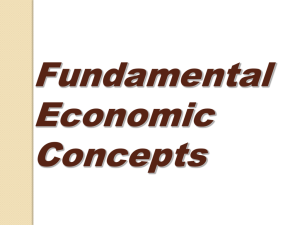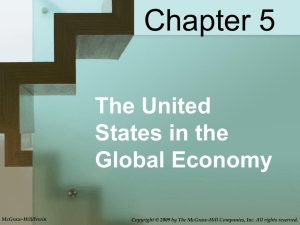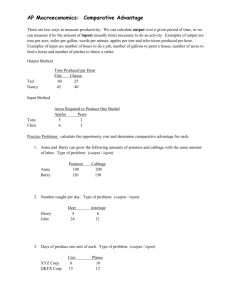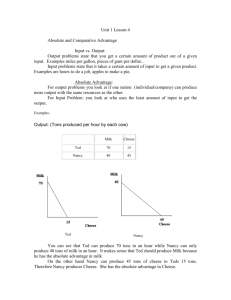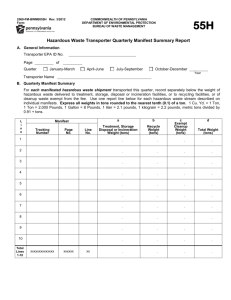Comparative Advantage and Trade
advertisement
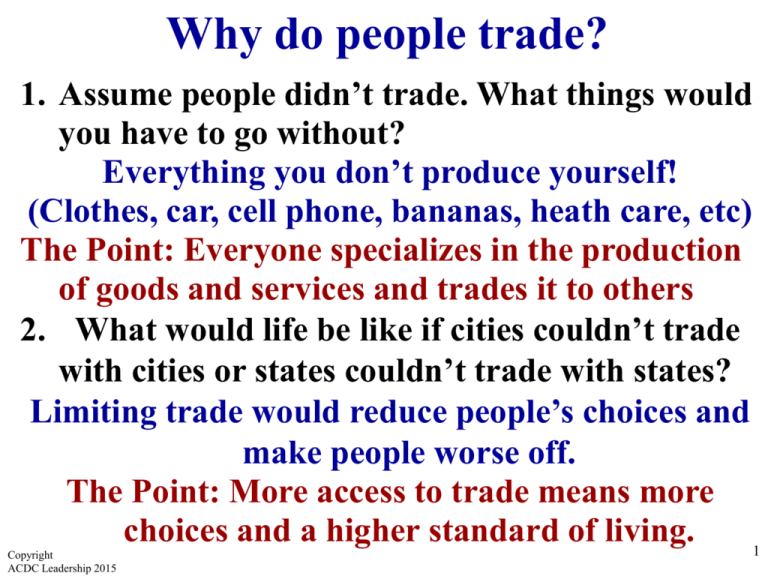
Why do people trade? 1. Assume people didn’t trade. What things would you have to go without? Everything you don’t produce yourself! (Clothes, car, cell phone, bananas, heath care, etc) The Point: Everyone specializes in the production of goods and services and trades it to others 2. What would life be like if cities couldn’t trade with cities or states couldn’t trade with states? Limiting trade would reduce people’s choices and make people worse off. The Point: More access to trade means more choices and a higher standard of living. 1 Copyright ACDC Leadership 2015 Economic Basis for Trade • Nations have different resource endowments • Labor-intensive goods • Land-intensive goods • Capital-intensive goods LO2 Absolute and Comparative Advantage Copyright ACDC Leadership 2015 3 Let’s Simplify… 4 Specialization benefits both sides • Shift resources to export industry • Achieve higher overall output and income • Absolute advantage –Higher output per worker for a good • Comparative advantage –Lower domestic opportunity cost for a good 5-5 Comparative Advantage Mexico’s Production Possibilities Table (in Tons) Product Production Alternatives A B C D E Avocados 0 20 24 40 60 Soybeans 15 10 9 5 0 **Optimal domestic production occurs at point C • Opportunity cost of 1 ton of Soybeans is 4 tons of Avocados • Opportunity cost of 1 ton of Avocados is .25 tons of Soybeans 5-6 Comparative Advantage U.S.’s Production Possibilities Table (in Tons) Product Production Alternatives A B C D E Avocados 0 30 33 60 90 Soybeans 30 20 19 10 0 **Optimal domestic production occurs at point C • Absolute advantage in both goods • Opportunity cost of 1 ton of Soybeans is 3 tons of Avocados • Opportunity cost of 1 ton of Avocados is .33 tons of Soybeans 5-7 Comparative Advantage • • • • • Mexico will produce avocados U.S. will produce soybeans U.S. gives up 3 A for 1 S Mexico gives up 4 A for 1 S Terms of trade –3.5 A for 1 S –Both countries benefit 5-8 Comparative Advantage • Gains from trade • Mexico starts at C (24 A and 9S) –Move to E (60 A and 0 S) –Trade 35 A for 10 S • U.S. starts at C (33 A and 19 S) –Move to A (0 A and 30 S) –Trade 10 S for 35 A • Overall gains? 5-9 Comparative Advantage (pg. 98) Terms of Trade – 1s : 3.5a Trade: 10 tons soybeans for 35 tons avocados Homework Problem a. What is each country’s cost ratio of producing plums and apples? b. Which nation should specialize in which product? • New Zealand should produce apples and Spain should produce plums. c. Show the trading possibilities lines for each nation if the actual terms of trade are 1 plum for 2 apples. (Plot these lines on your graph.) d. Suppose the optimum product mixes before specialization and trade were alternative B in New Zealand and alternative S in Spain. What would be the gains from specialization and trade? Total Gain Apples = 20 (= 60 - 40); Total Gain Plums = 10 (= 60 -50)
